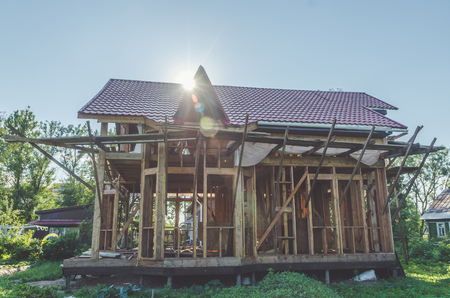Understanding Your Flat Roof System
Before diving into maintenance tips, it’s important to understand what kind of flat roof you have and how its specific characteristics impact long-term durability. In the U.S., the most common types of flat roofing systems include built-up roofs (BUR), modified bitumen, EPDM rubber, TPO, and PVC membranes. Each material has unique properties that influence how you should care for your roof. For example, built-up roofs are known for their multiple layers of asphalt and felt, offering solid protection but requiring regular inspection for cracks or blistering. Meanwhile, modern single-ply systems like TPO and PVC are lightweight and energy-efficient but can be vulnerable to punctures if not properly maintained. Knowing whether your flat roof is made from traditional materials or newer synthetics will help you tailor your maintenance routine to address its specific vulnerabilities and strengths, ultimately extending its life and performance.
Regular Inspection and Cleaning Routines
One of the most effective ways to maintain the longevity of your flat roof is to establish a consistent inspection and cleaning schedule. In the U.S., where seasonal weather can be unpredictable, it’s especially important to stay proactive. By regularly checking your roof and removing debris like leaves, branches, and dirt, you can identify potential issues before they escalate into costly repairs. Early detection helps prevent water pooling, membrane damage, and even interior leaks.
Most roofing experts recommend inspecting your flat roof at least twice a year—typically in the spring and fall. After major storms, it’s also smart to do a quick check for any new debris or visible damage. The table below outlines a practical inspection routine:
| Task | Frequency | What to Look For |
|---|---|---|
| Visual Inspection | Every 6 months & after storms | Ponding water, cracks, punctures, loose flashing |
| Debris Removal | Monthly or as needed | Leaves, branches, dirt buildup blocking drains |
| Gutter & Drain Check | Quarterly | Clogs, standing water near drains or scuppers |
| Surface Cleaning | Twice a year | Moss, algae, or mold growth that could affect membrane integrity |
Establishing this routine isn’t just about keeping things tidy; it’s about preserving your investment. In American neighborhoods—whether suburban or urban—a well-maintained flat roof means fewer unexpected expenses and better peace of mind. Consistency is key: set reminders on your phone or calendar so inspections become second nature. Over time, this habit will help you spot small problems early and extend the life of your flat roof significantly.

3. Managing Drainage and Preventing Ponding Water
Proper drainage is one of the most critical factors in maintaining a flat roof’s long-term durability. Unlike sloped roofs, flat roofs are more susceptible to water pooling, which can lead to leaks, structural damage, and even mold growth if not addressed. That’s why it’s essential to regularly inspect your roof’s drainage system—including gutters, downspouts, and internal drains—to make sure everything is working smoothly.
Start by checking gutters and drains for any debris like leaves, twigs, or dirt that could cause blockages. Cleaning these areas at least twice a year—ideally in the spring and fall—can go a long way toward preventing water accumulation. If you live in an area with frequent storms or heavy tree coverage, consider cleaning them more often.
Another practical tip is to look for signs of ponding water after heavy rain. If you notice standing water that doesn’t drain within 48 hours, this could indicate an issue with your roof’s slope or drainage system. In such cases, contacting a roofing professional for further assessment is wise. They might recommend installing additional drains or correcting the roof pitch to improve runoff.
Don’t overlook small fixes—tightening loose gutter brackets or replacing damaged drain covers can prevent bigger headaches down the line. By staying proactive about drainage maintenance, you’ll reduce the risk of costly repairs and extend the lifespan of your flat roof.
4. Addressing Weather and Seasonal Challenges
Flat roofs across the United States face a wide range of weather conditions, from the scorching summer heat in Arizona to heavy snowfalls in Minnesota. To keep your flat roof durable and functional year-round, it’s important to proactively address these seasonal challenges. Here are practical strategies tailored for different American climates.
Summer Heat Protection
Intense sun can cause roofing materials to expand, crack, or degrade over time. For regions prone to high temperatures and UV exposure, consider applying reflective roof coatings that deflect sunlight and reduce surface temperatures. Schedule routine inspections in late spring to check for blisters or warped areas caused by heat.
Fall Preparation Checklist
| Task | Why It Matters |
|---|---|
| Clear leaves and debris | Prevents clogging of drains before autumn storms |
| Inspect flashings and seams | Avoids leaks during seasonal rainfall |
| Check for standing water | Reduces risk of membrane deterioration |
Winterization Strategies
If you live in areas with freezing temperatures or heavy snow, winter preparation is essential. Insulate vulnerable sections and ensure proper drainage to avoid ice dams. Remove excessive snow buildup promptly using safe tools to prevent structural stress. Inspect for cracks that could allow water infiltration during freeze-thaw cycles.
Spring Maintenance Tips
- Look for water stains on ceilings indicating hidden leaks from melting snow.
- Re-examine seals and joints after winter’s expansion and contraction cycles.
By customizing your maintenance plan according to your region’s climate patterns, you’ll extend the life of your flat roof while protecting your property investment against America’s diverse weather challenges.
5. Repairing Minor Damage Promptly
When it comes to flat roof maintenance, addressing minor issues as soon as they appear is key to preventing bigger, more expensive problems down the line. Small cracks, blisters, or punctures may not seem like a big deal at first, but if left untreated, they can quickly allow water to seep in and cause extensive damage to your building’s structure and insulation.
How to Spot Minor Damage Early
During your regular roof inspections, keep an eye out for any signs of trouble. Look for small cracks along seams or around roof penetrations such as vents and skylights. Blisters—those raised areas where air or moisture is trapped beneath the roofing membrane—are another warning sign. Also, inspect for punctures caused by foot traffic or fallen debris, especially after storms.
Steps to Fix Small Problems Quickly
If you notice a crack or blister, don’t wait for it to get worse. Most minor repairs can be handled with a bit of roof patching compound and a putty knife. Clean the damaged area thoroughly before applying any patch materials. For blisters, carefully cut away the raised section, dry out the area underneath, and seal it with appropriate roofing cement. For punctures, patch the hole with compatible material recommended by your roofing manufacturer.
When to Call a Professional
While DIY fixes work for very minor issues, don’t hesitate to call in a licensed roofing contractor if you notice widespread damage or if you’re unsure about how serious the problem is. Acting quickly on small repairs will help extend your flat roof’s lifespan and save you from costly repairs in the future.
6. Knowing When to Call a Professional
While regular DIY flat roof maintenance can help extend the life of your roofing system, there are times when calling in a licensed roofing contractor is not just smart—it’s absolutely necessary. Understanding the warning signs that indicate you need professional help can save you money and headaches down the road.
Recognizing Red Flags
If you notice persistent leaks, large pools of standing water that don’t drain after 48 hours, widespread blistering, cracks, or visible sagging on your flat roof, these are strong indicators that your roof needs more than basic upkeep. Unusual odors or mold growth inside your building can also signal underlying moisture issues related to roof damage.
Why Hire a Licensed Roofing Contractor?
Attempting major repairs yourself can lead to safety hazards and may void your warranty. Licensed professionals have the expertise, equipment, and insurance needed to safely diagnose and fix problems according to local building codes and industry standards.
What to Expect During a Professional Inspection or Repair
A reputable roofing contractor will perform a thorough inspection, assessing the membrane, flashing, insulation, and drainage systems. They’ll provide you with a detailed report of findings along with repair recommendations and an honest estimate. In many cases, contractors use advanced diagnostic tools like infrared cameras to detect hidden moisture or weak spots invisible to the naked eye.
By recognizing when it’s time to step back and let a pro take over, you’re making an investment in your property’s long-term durability. Don’t wait until minor issues become major expenses—call a trusted local roofer at the first sign of trouble to ensure your flat roof stays safe and sound for years to come.


